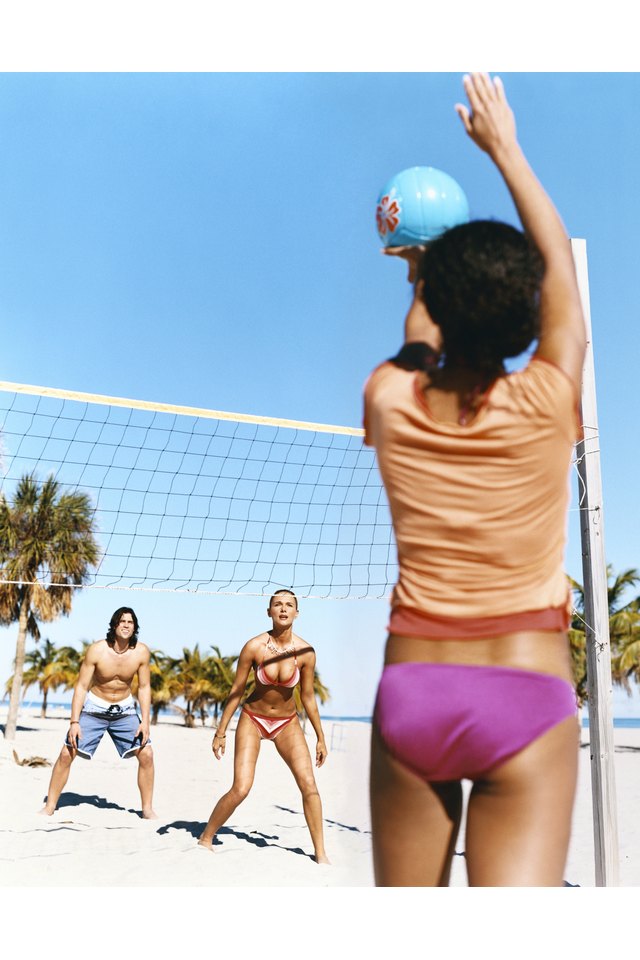Volleyball Bumping Drills

In volleyball, the term bumping refers to passing the ball with the forearms. A player will join her forearms to bump the ball to a teammate for a more precise set or spike. Bumping slows the play down and enables a team to organize an effective counter-attack. Since the skill is so vital to all aspects of the game, bumping drills should be part of every practice session.
Sit and Bump
In this individual bumping drill, the player bumps the ball straight up in the air and then lowers himself into a sitting position. The player then returns to a standing position, continuing to bump the ball the entire time. This drill stresses controlled, accurate bumps from a number of body positions.
Net Bumps
This bumping drill incorporates the net to add an extra degree of difficulty and to build agility and quickness. The player starts close to the net, standing sideways to the net, and bumps the ball over to the other side. With the ball still in the air, the player runs under the net, establishes proper position and bumps the ball back over the net. The player continues bumping the ball over the net to herself for at least 10 consecutive hits.
X Drill
Use removable tape to place five X targets at various points around the court. The player begins the drill bumping the volleyball to one of the target spots. While the ball is in the air, the player must run to the spot and receive the ball, bumping it to another one of the designated X spots. This drill provides a strong aerobic workout while also placing emphasis on bumping accuracy.
Wall Bump
The drill starts with the player facing a wall about 6 to 10 feet away. The player bumps the ball into the wall and then receives it, bumping the ball straight up in the air. When the ball comes back down, the player once again bumps it into the wall and repeats the same sequence. Players should also use this drill to work on bumping balls from their left and right sides, not just straight ahead.
Pipeline Passing
This bumping drill requires two players. Draw two lines on the ground about 10 feet apart. All passing takes place between the two lines. The first player bumps the ball to his partner and then shuffles sideways to touch the right line before shuffling back into position to receive the return bump. After the second bump, the player shuffles sideways to touch the left line before shuffling back into position. Each player continues the same shuffling pattern after each bump, working on lateral movement and proper bumping form.
References
Writer Bio
William Lynch has been a freelance writer for the past fifteen years, working for various web sites and publications. He is currently enrolled in a Master of Arts program in writing popular fiction at Seton Hill University. He hopes to one day become a mystery novelist.
